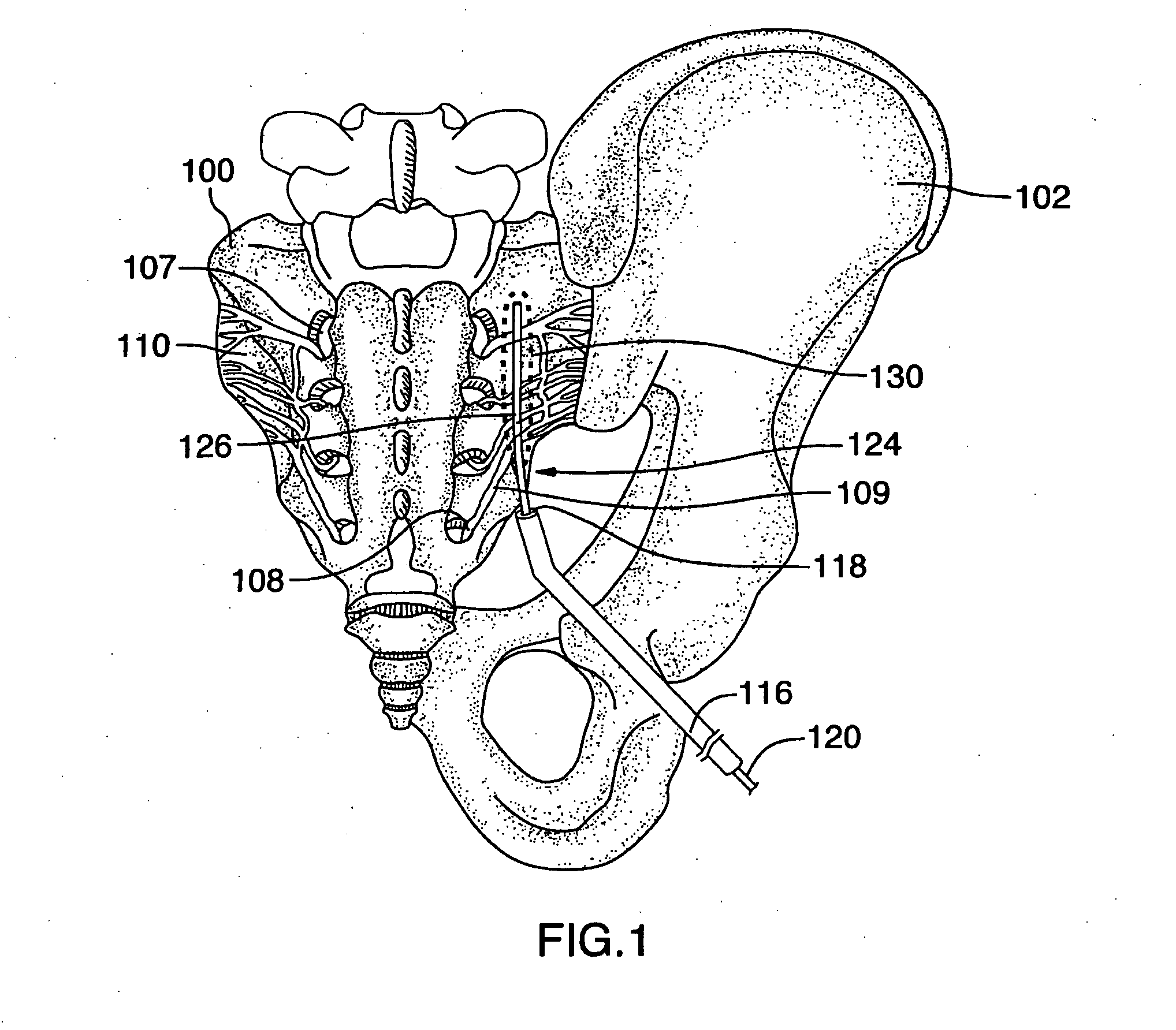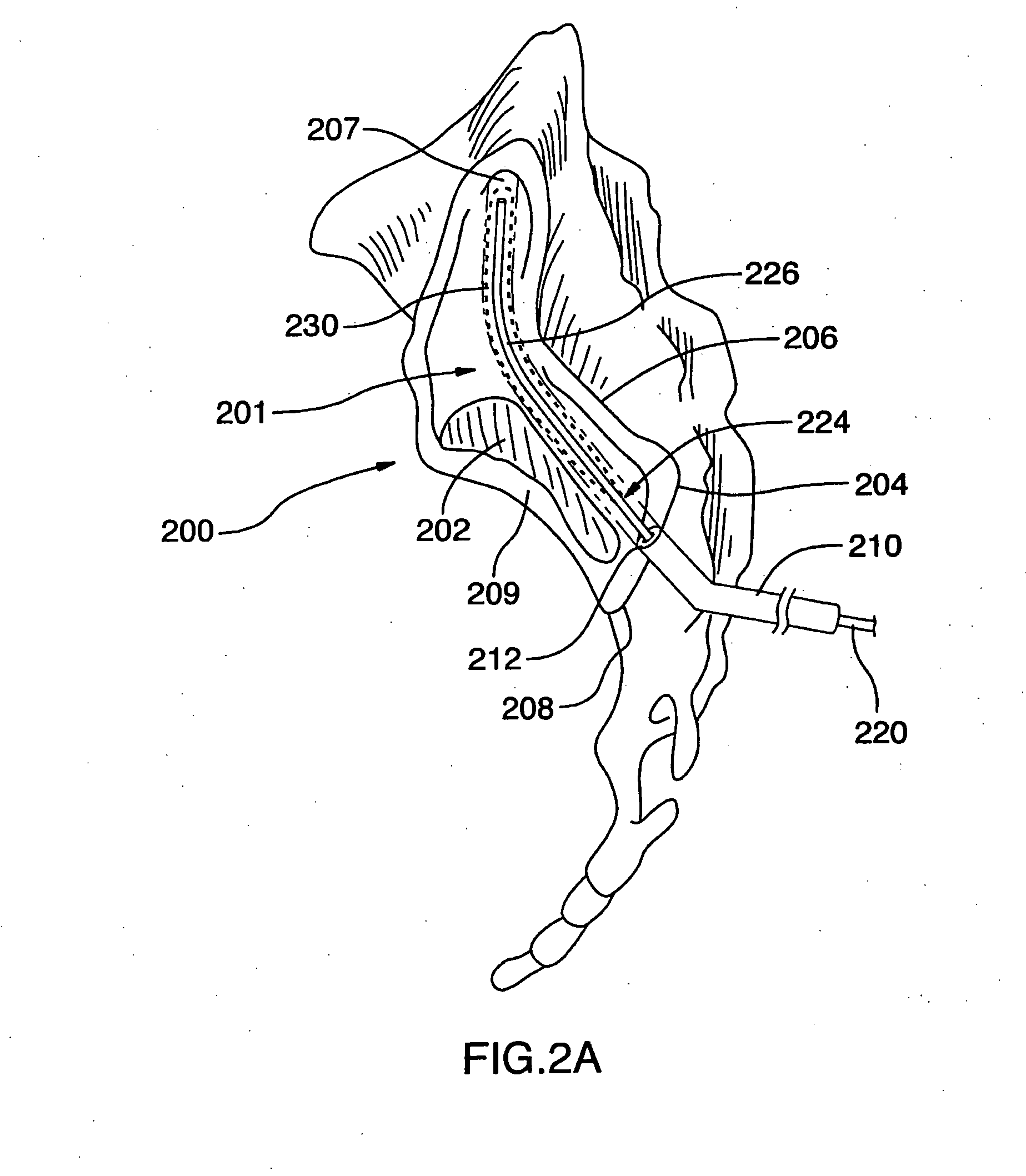Methods of treating the sacroilac region of a patient's body
a sacroiliac region and patient technology, applied in the field of sacroiliac region treatment of patients, can solve the problems of time-consuming procedures, and not allowing the creation of strips
- Summary
- Abstract
- Description
- Claims
- Application Information
AI Technical Summary
Benefits of technology
Problems solved by technology
Method used
Image
Examples
Embodiment Construction
Definitions
[0008] In the context of the present invention, a ‘strip lesion’ refers to a lesion which is elongate, i.e. its length substantially exceeds at least one of its other two dimensions. A strip lesion may be substantially straight or curved.
[0009] Furthermore, in the context of the present invention, ‘ablate,’ ablating or ‘ablation’ is defined as: raising the temperature of a tissue such that at least a portion of the tissue is coagulated and a lesion is formed within the tissue.
[0010] In addition, in the context of the present invention, the term ‘probe’ is used to describe any elongate device comprising an energy delivery device which may be percutaneously inserted into a patient's body. These devices include but are not limited to catheters, cannulae and electrosurgical probes. For the sake of clarity, the term ‘probe’ is used throughout the specification to describe any such device.
[0011] Pain or other symptoms (described below) associated with or emanating from the...
PUM
 Login to View More
Login to View More Abstract
Description
Claims
Application Information
 Login to View More
Login to View More - R&D
- Intellectual Property
- Life Sciences
- Materials
- Tech Scout
- Unparalleled Data Quality
- Higher Quality Content
- 60% Fewer Hallucinations
Browse by: Latest US Patents, China's latest patents, Technical Efficacy Thesaurus, Application Domain, Technology Topic, Popular Technical Reports.
© 2025 PatSnap. All rights reserved.Legal|Privacy policy|Modern Slavery Act Transparency Statement|Sitemap|About US| Contact US: help@patsnap.com



